Apartment living offers convenience, community, and often, an excellent location. However, it also comes with a unique challenge: noise. Whether it is a neighbor’s footsteps overhead, street traffic, or conversations through thin walls, unwanted sounds disrupt your peace and quiet. This constant intrusion affects your ability to concentrate, relax, and get restful sleep. As your home organization coach, I understand your need for a calm and comfortable living space. You deserve practical, budget-conscious solutions that bring tranquility back into your home. This guide equips you with twelve actionable strategies to significantly reduce noise in your apartment, transforming it into a more serene sanctuary.

Understanding Apartment Noise: Your Everyday Disruptions
Noise manifests in your apartment in several ways, and identifying the type of sound helps you tackle it effectively. You encounter two primary types of noise: airborne and impact. Airborne noise travels through the air, including voices, music, television sounds, and street noise. Impact noise transmits through physical structures, such as footsteps from the apartment above, a dropped item, or vibrations from a washing machine. Recognizing these distinctions empowers you to choose the right soundproofing techniques.
Common sources of noise in apartments include:
- Neighbors: Talking, laughter, music, television, children playing, pets.
- Plumbing: Running water, flushing toilets, pipe vibrations.
- Appliances: Refrigerators, washing machines, dishwashers, air conditioners.
- Exterior Noise: Traffic, construction, sirens, pedestrian activity.
- Building Structure: Creaking floors, elevator sounds, ventilation systems.
You do not need to accept constant noise as an inevitable part of apartment living. Many effective strategies exist to mitigate these disturbances, restoring calm to your personal space.
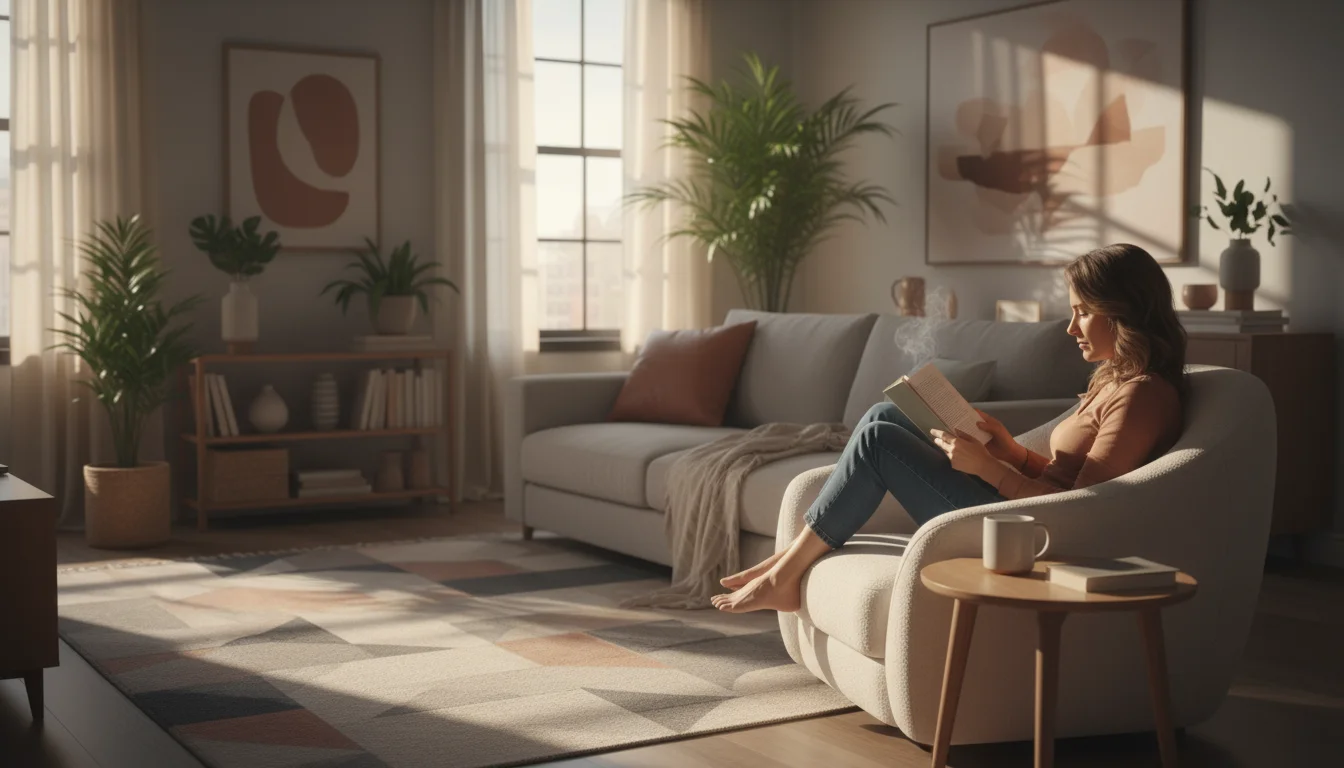
Why Reducing Noise Matters for Your Well-being
Beyond simple annoyance, persistent noise negatively impacts your health and productivity. Scientific studies link chronic noise exposure to increased stress levels, sleep disturbances, and even higher blood pressure. A noisy environment makes concentration difficult, turning simple tasks into frustrating challenges. For those working from home, a peaceful atmosphere is essential for an ergonomic home office. You need an environment where you can focus without constant interruptions, supporting both your mental clarity and physical comfort.
Imagine your ideal home: a place where you relax after a long day, where you concentrate on your work, and where you enjoy uninterrupted sleep. Reducing noise helps you achieve this vision. It improves your quality of life, enhances your mood, and fosters a greater sense of control over your personal environment. You gain a feeling of calm and comfort, making your apartment feel truly like home.

12 Practical Solutions to Quiet Your Apartment
Ready to reclaim your quiet space? These twelve practical, actionable solutions address various noise sources and fit most apartment living situations. You can implement many of these strategies on a budget, requiring minimal DIY skills.
-

Making an apartment quieter with a new door sweep. Seal Gaps Around Doors and Windows
Airborne noise loves to travel through gaps. Inspect your doors and windows for any light showing through cracks, which indicates pathways for sound. Apply self-adhesive weatherstripping tape along the door and window frames. Install a door sweep at the bottom of your main entry door to block sound from the hallway. This simple, inexpensive fix makes a significant difference in preventing outside noise from entering your living space.
-
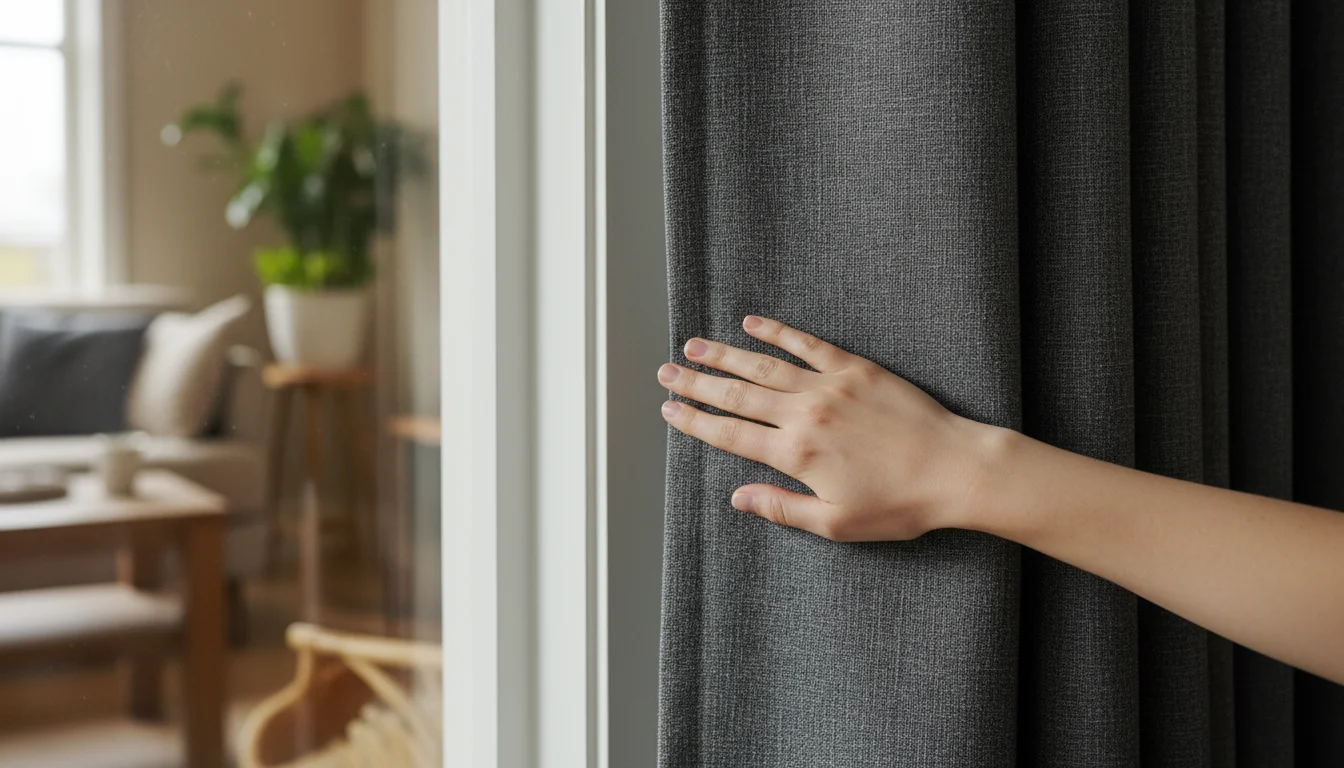
Getting the thick, dark thermal curtain to fully seal the window. Hang Heavy Curtains or Drapes
Fabric absorbs sound, and thicker, heavier materials absorb more effectively. Replace lightweight blinds or curtains with thick, insulated drapes. Thermal curtains or those specifically marketed for sound dampening work best. Hang them as close to the window frame as possible and extend them beyond the frame for maximum coverage. This solution not only reduces external noise but also improves your apartment’s insulation, potentially lowering energy bills.
-

Enjoying a good book on a comfy rug in a sunny living room. Use Area Rugs and Carpeting
Hard surfaces like hardwood, tile, or laminate floors reflect sound, causing echoes and amplifying impact noise. Combat this by introducing soft floor coverings. Lay down area rugs, especially thick ones with padding underneath, in high-traffic areas and rooms where you spend a lot of time. If your landlord permits, consider wall-to-wall carpeting in bedrooms for maximum sound absorption. This significantly dampens impact noise from your footsteps and absorbs airborne sounds within your room.
-
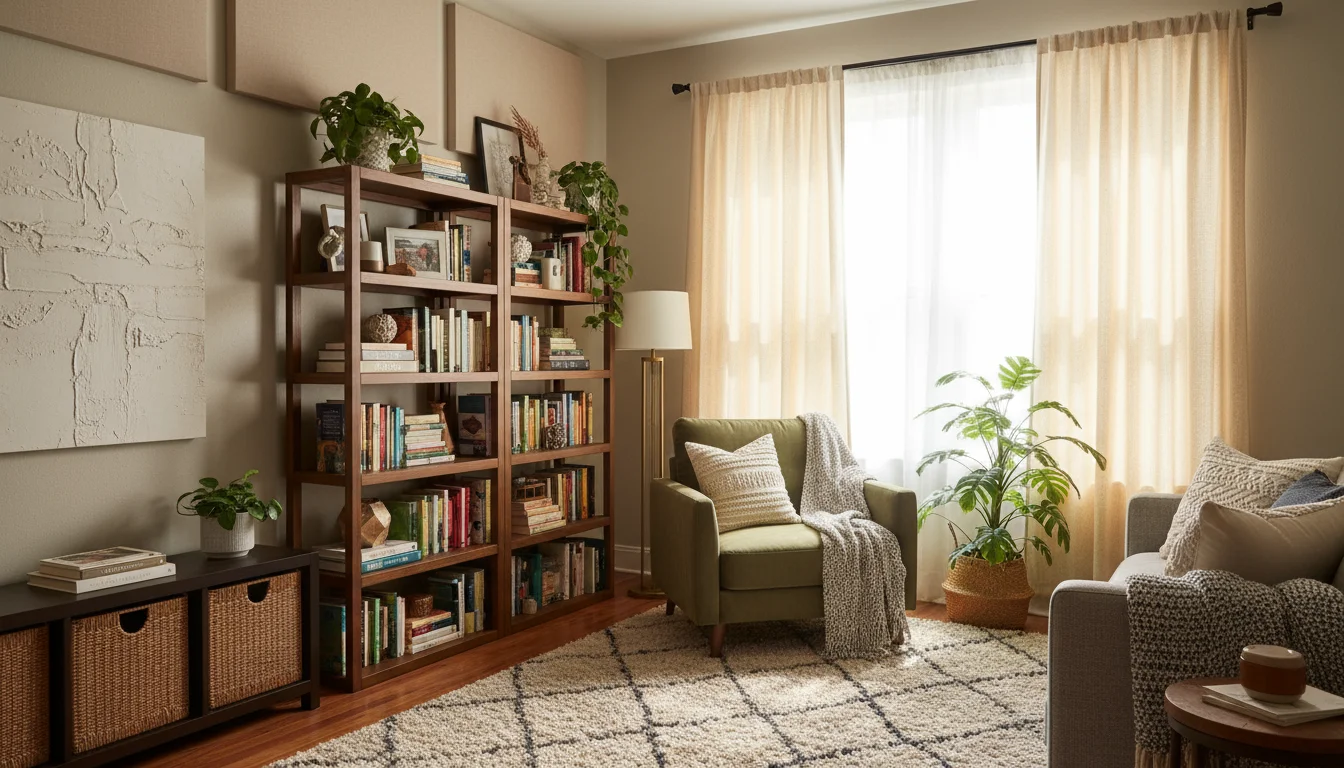
Enjoying a good book in a cozy green armchair by a tall bookshelf. Arrange Furniture Strategically
Your furniture does more than decorate; it acts as a sound barrier and absorber. Place large, upholstered pieces like sofas and armchairs against shared walls. A tall bookshelf filled with books along a noisy wall creates a dense, irregular surface that helps diffuse and absorb sound. Positioning furniture strategically minimizes sound transmission and creates quieter zones within your apartment.
-
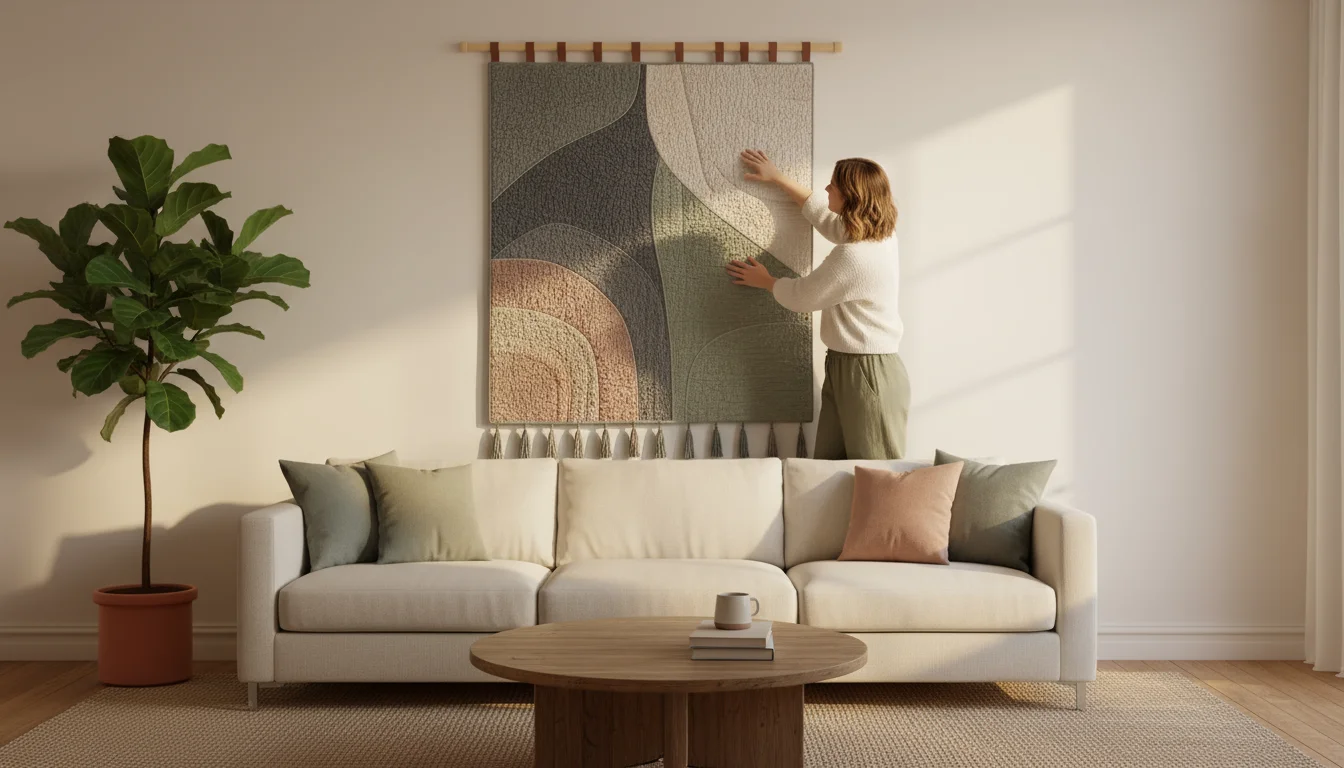
She’s hanging a beautiful quilted blanket, perfect for decor and sound. Install Acoustic Panels or Wall Hangings
For more targeted sound absorption, consider acoustic panels. These panels, made of dense, sound-absorbing materials, reduce echoes and block sound transmission. You can find attractive, fabric-covered acoustic panels that blend seamlessly with your decor. If dedicated panels exceed your budget or aesthetic, thick tapestries, large framed canvas art, or even quilted blankets hung on walls perform a similar function. Place these on walls directly opposite noise sources or on bare walls prone to echoing. This is a key soundproofing technique for noticeable results.
-
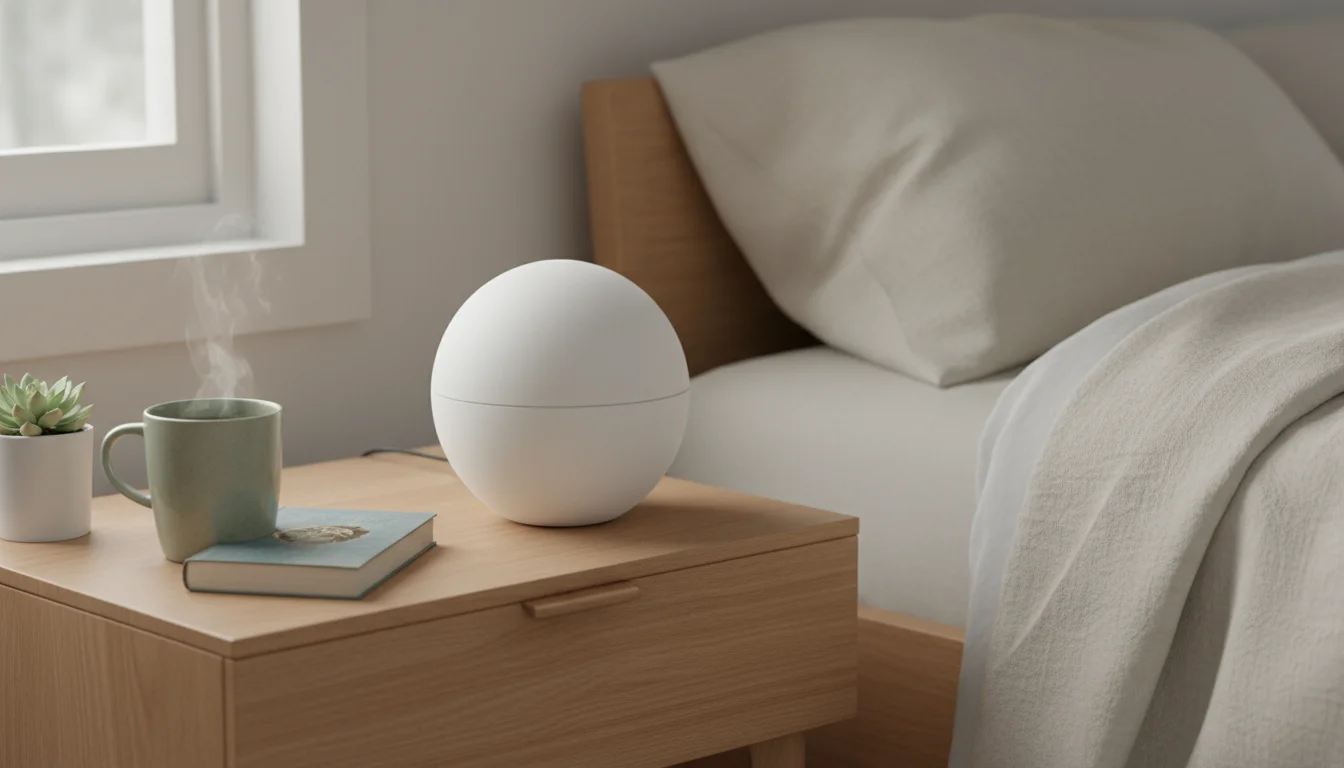
Your perfect bedside setup: white noise, tea, a book, and a plant. Embrace White Noise Machines
Sometimes you cannot eliminate noise completely. In these instances, white noise machines become invaluable tools. These devices produce a consistent, ambient sound, such as static, rain, or ocean waves, that masks disruptive background noises. They do not block sound but make unwanted sounds less noticeable to your brain. Place a white noise machine in your bedroom for better sleep or in your ergonomic home office to improve focus. You can find affordable options that significantly improve your peace of mind.
-

A tall, wooden bookshelf packed with books creates a cozy apartment sound bar… Insulate Walls with Bookshelves
A densely packed bookshelf against a shared wall acts as an excellent, natural sound barrier. The sheer mass of the books, combined with the irregular surfaces of the shelves, helps to block and diffuse sound waves. This method works particularly well for filtering airborne noise. Ensure the bookshelf covers as much of the wall as possible and is filled to capacity for optimal results. It is an aesthetic and functional soundproofing technique that doubles as smart storage.
-

Soft light from cream shades brightens a neat room with a succulent. Upgrade to Soundproof Blinds or Shades
While heavy curtains are effective, some windows benefit from specialized soundproof blinds or cellular shades. These products feature honeycomb designs or multiple layers of fabric specifically engineered to trap air and dampen sound. They offer a cleaner look than drapes while providing superior noise reduction, especially against persistent street noise.
-
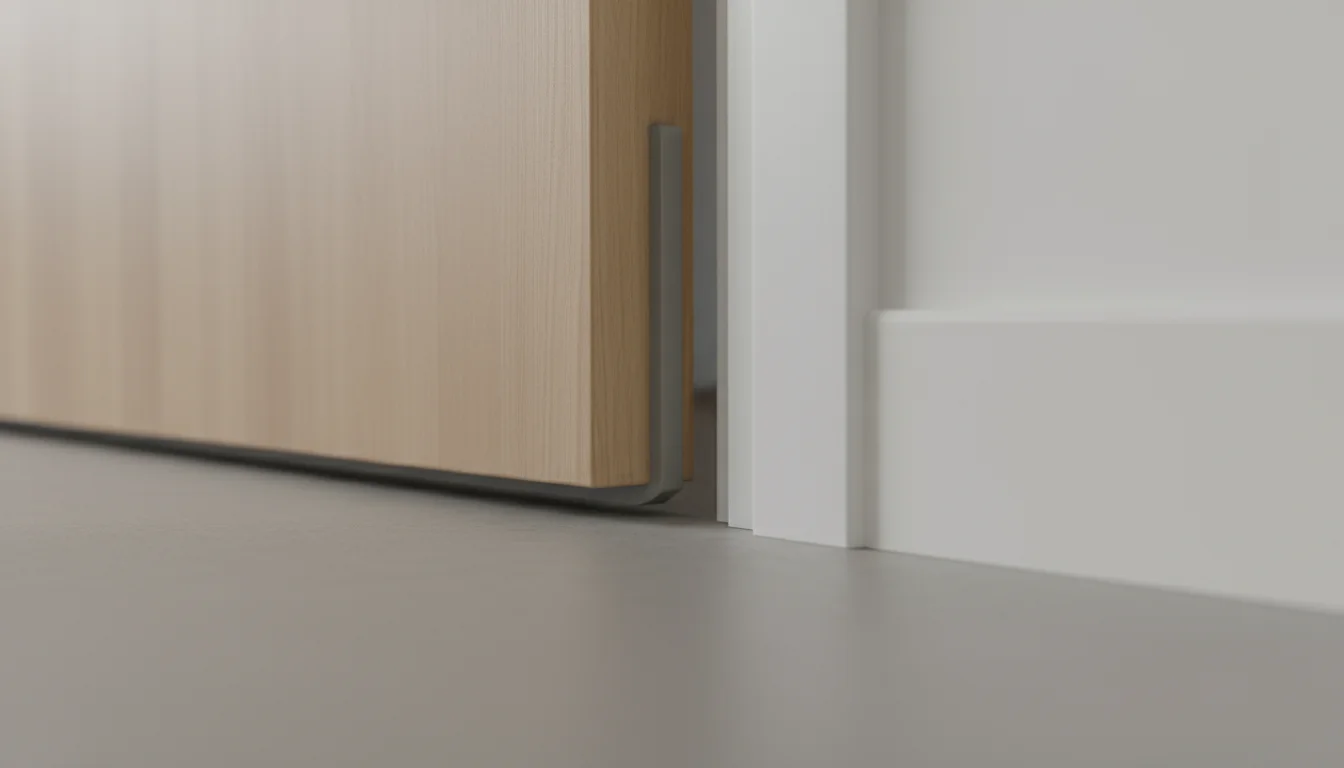
Rubber door gasket making a tight seal on a closed door. Utilize Door Gaskets and Seals
Beyond simple door sweeps, comprehensive door gaskets create an airtight seal around the entire perimeter of your door frame. These rubber or silicone seals press against the door when closed, preventing sound from leaking through the tiny gaps. This is particularly useful for apartment entry doors or bedroom doors if you need to isolate sound within a specific room. Companies like Bob Vila offer great resources for improving door seals, if you want to explore more technical options.
-

Abstract art with a thick wooden frame brightens a cozy living room. Add Mass to Shared Walls with Art or Mirrors
Increasing the mass of a wall helps block sound. While you cannot add drywall in an apartment, you can strategically hang heavy items. Large, framed artwork, especially pieces with thick backing, or heavy mirrors add density to a wall. While not as effective as dedicated acoustic panels, these items contribute to sound dampening by disrupting sound waves and adding a slight barrier.
-
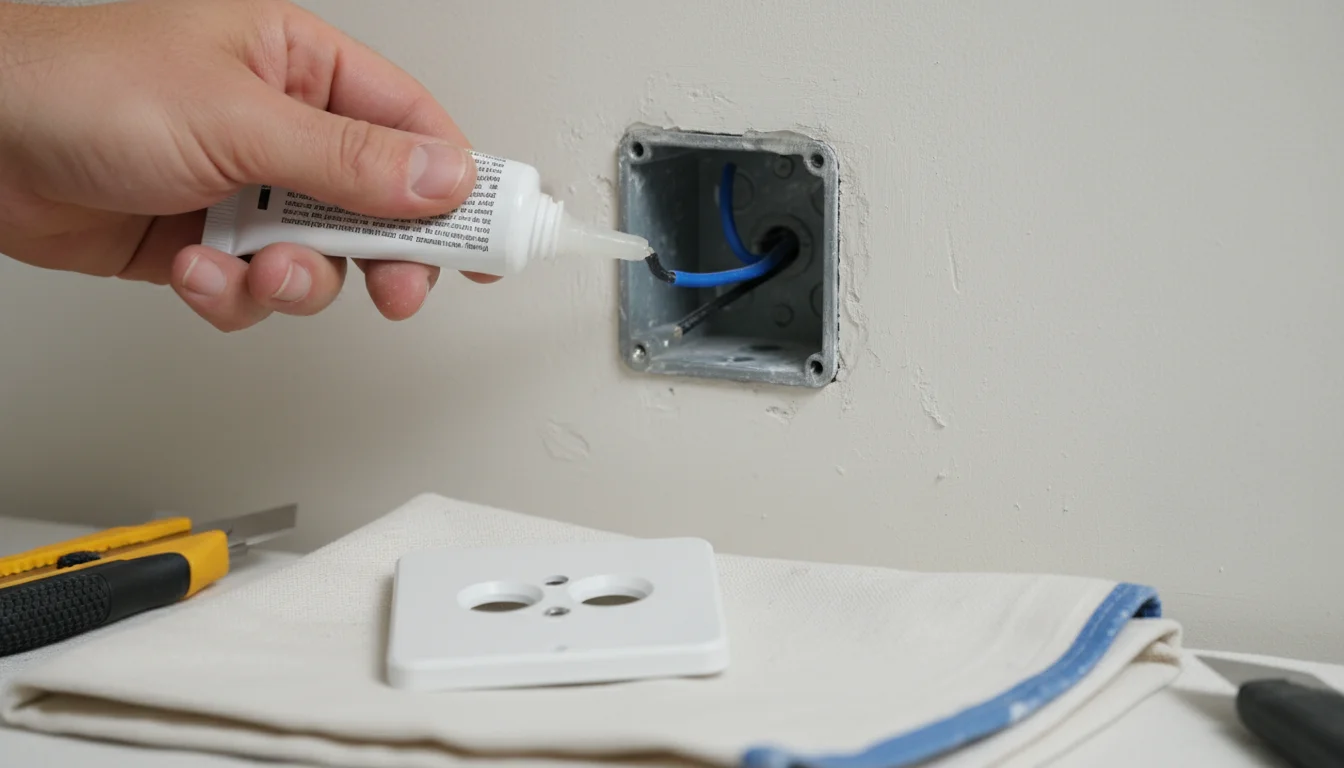
Sealing an electrical outlet to block out noise. Check for Gaps in Vents and Outlets
You might overlook tiny gaps around electrical outlets, light switches, and air vents, but these small openings allow sound to travel easily between rooms or even apartments. Carefully remove outlet covers and use acoustic sealant or child-safe outlet plugs to block these tiny sound leaks. For vents, you might apply acoustic foam or baffles inside the ductwork, ensuring not to impede airflow. Always exercise caution when working near electrical components.
-

Neighbors having a friendly chat on an apartment landing. Communicate with Neighbors (Respectfully)
Sometimes, the simplest solution involves a conversation. If a specific noise source from a neighbor becomes problematic, a polite and respectful conversation often resolves the issue. You might find they are unaware of how much sound carries. Focus on the impact the noise has on you, not on accusing them. For ongoing issues, refer to your lease agreement or contact your building management, but begin with a friendly approach.
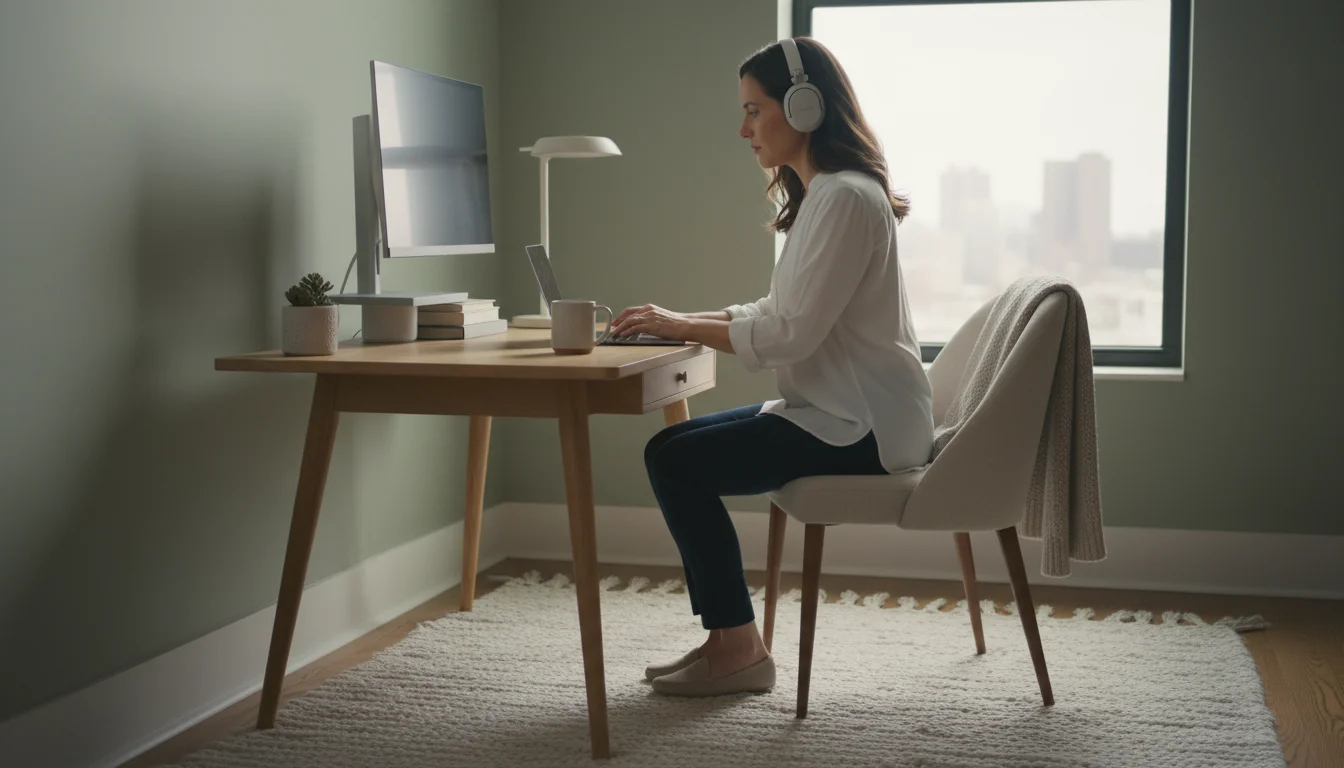
Creating a Quieter Ergonomic Home Office
A home office demands focus, and noise directly impacts your productivity and comfort. To create an ergonomic home office environment, you must address sound control. Implement several of the solutions above directly in your workspace. Place your desk away from shared walls or windows if possible. Use acoustic panels behind your monitor or on the wall you face during video calls. A thick rug under your desk not only absorbs sound but also protects your floor and adds comfort.
Consider headphones with noise-canceling capabilities for focused work. These block out ambient sounds, helping you concentrate. Combine active noise cancellation with a white noise machine in the background for an extra layer of sonic protection. Your home office should be a zone of concentration, and actively managing noise helps achieve that ergonomic ideal, reducing mental strain and improving your output.

Budget-Friendly DIY Sound Solutions
Achieving a quieter apartment does not require a large budget. Many effective soundproofing techniques involve inexpensive materials and simple DIY projects. For example, weatherstripping and door sweeps cost minimal amounts. You can often find heavy blankets or quilts at thrift stores to hang as temporary acoustic barriers. Even strategically placed cardboard boxes filled with old clothes against a wall offer some sound dampening in a pinch. Apartment Therapy offers additional creative and affordable solutions for renters looking to improve their living spaces without breaking the bank.
Here are some additional low-cost ideas:
- Repurpose textiles: Use old towels, blankets, or even thick clothing inside pillowcases or fabric covers to create makeshift sound-absorbing panels you can lean against walls.
- DIY draft stoppers: Roll up a towel or piece of fabric and place it at the base of a door to block sound and drafts.
- Rearrange wisely: Moving existing furniture or using your current decor to add density or break up sound waves costs nothing.
- Utilize plants: While not a primary sound blocker, large, dense plants placed strategically can help absorb a small amount of ambient noise and improve your indoor environment.
These solutions prove you can significantly reduce noise in your apartment even with tight budget constraints. Focus on layers and density to make the most impact.
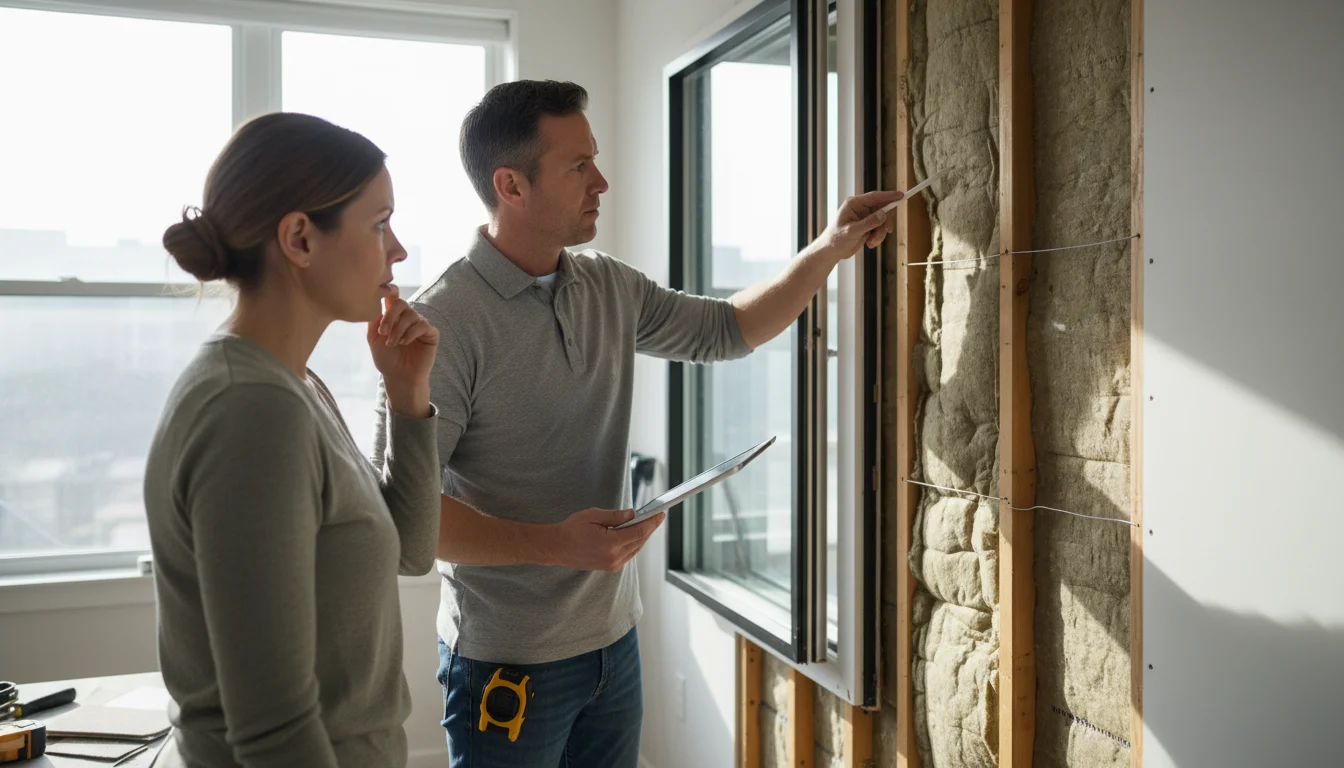
When to Consider Professional Soundproofing (and What That Means)
For most apartment dwellers, the practical solutions outlined above suffice. However, in extreme cases of noise transmission, or if you own your unit, you might consider more robust soundproofing techniques. Professional soundproofing involves structural modifications such as adding mass to walls (e.g., another layer of drywall, mass loaded vinyl), insulating wall cavities, or replacing windows with sound-reducing alternatives. These are significant undertakings, often expensive, and usually require landlord approval in rental situations.
If you face persistent, severe noise that impacts your health and well-being despite all DIY efforts, and if your lease permits, consult with your building management or a specialized acoustical consultant. They assess the specific noise issues and recommend appropriate, landlord-approved solutions. For renters, focus primarily on reversible, surface-level solutions. You rarely undertake extensive structural soundproofing in a rental property.
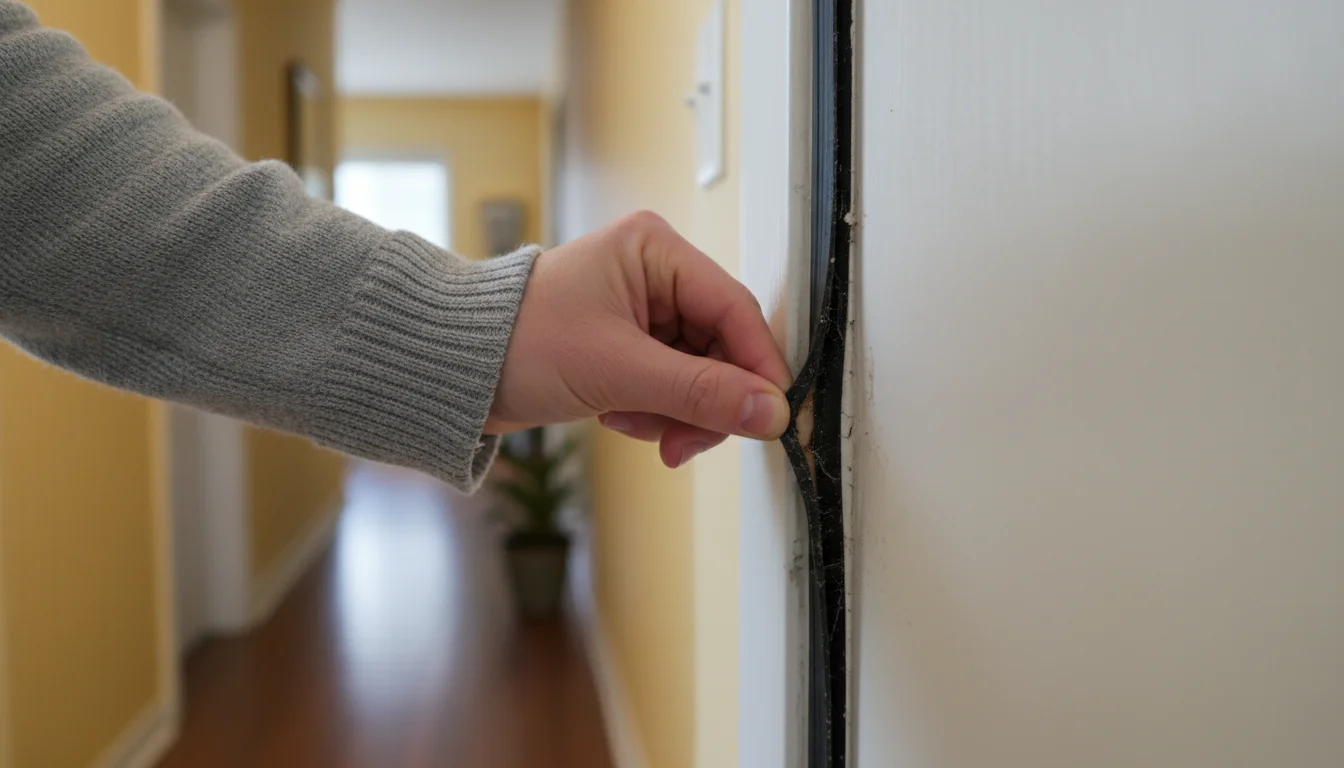
Maintaining Your Quiet Haven
Once you implement noise reduction strategies, maintaining their effectiveness is important. Regularly check weatherstripping and door sweeps for wear and tear; replace them when they lose their seal. Keep your curtains and rugs clean, as dust can reduce their efficacy over time, though minimally. If you use white noise machines, ensure they operate correctly and adjust settings as needed. Periodically review your apartment for new noise sources or areas where existing solutions might need an upgrade. Consistently applying these practices ensures your apartment remains the quiet, comfortable sanctuary you worked to create.

Frequently Asked Questions
Do houseplants actually reduce noise?
Houseplants offer minimal direct noise reduction. While large, dense plants can absorb a very small amount of high-frequency sound, they are not a primary solution for blocking or dampening significant noise. Their main benefit lies in improving indoor air quality and aesthetics, contributing to a sense of calm rather than true soundproofing. You should prioritize other solutions for effective noise reduction.
Can I use egg cartons for soundproofing?
No, egg cartons do not effectively soundproof a room. While they have an uneven surface that might slightly diffuse high-frequency sounds, they lack the mass and density required to block or significantly absorb noise. This is a common misconception. For real sound dampening, you need materials like heavy fabrics, dense foam, or specialized acoustic panels.
Is apartment soundproofing expensive?
The cost of apartment soundproofing varies widely based on the methods you choose. Many practical solutions, such as weatherstripping, door sweeps, and heavy curtains, are very budget-friendly. White noise machines also offer an affordable way to mask noise. More advanced solutions, such as installing acoustic panels or professional structural modifications, incur higher costs. You can achieve significant noise reduction with minimal investment by focusing on DIY and readily available items.
Will my landlord pay for soundproofing?
Landlord responsibility for soundproofing depends on your lease agreement and local tenant laws. Generally, landlords are responsible for maintaining a habitable living environment. If noise levels become extreme and interfere with your quiet enjoyment of the property, you might have grounds to request assistance. However, for minor or common apartment noises, landlords typically do not cover extensive soundproofing. Always communicate politely and review your lease first.
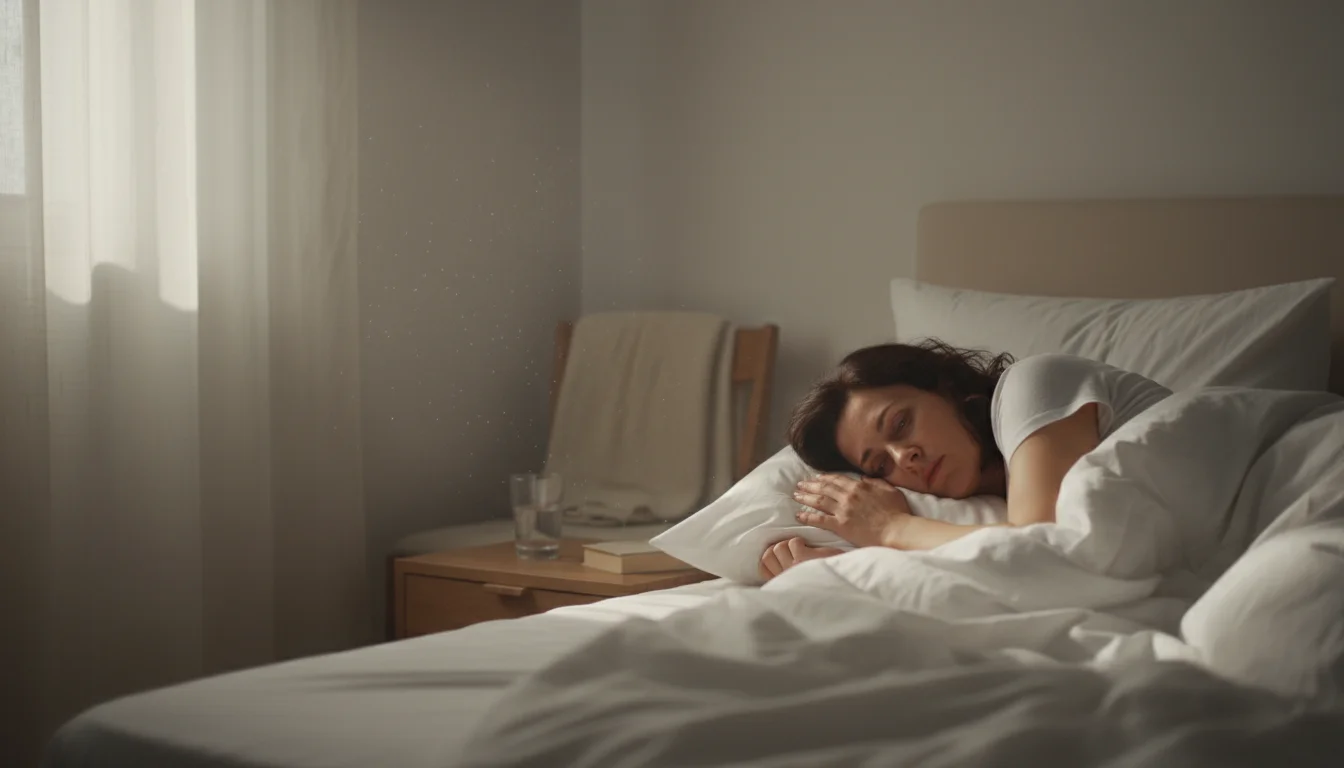

Leave a Reply